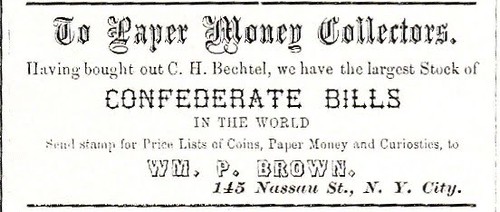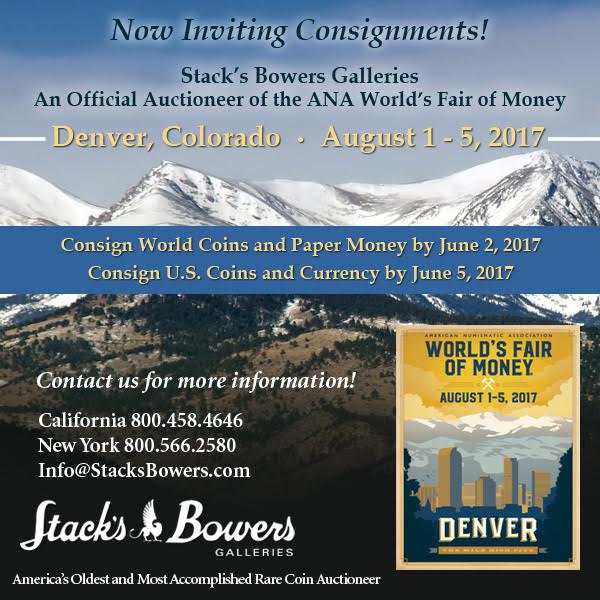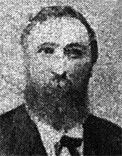
PREV ARTICLE
NEXT ARTICLE
FULL ISSUE
PREV FULL ISSUE
WILLIAM PENN BROWN (1841-1929)John Lupia submitted the following information from the online draft of his Encyclopedic Dictionary of Numismatic Biographies for this week's installment of his series.
Thanks! As always, this is an excerpt with the full article and bibliography available online. This week's subject is stamp, coin and paper money dealer William P. Brown. -Editor
He is considered the first American stamp dealer who began in 1859, though he considered himself second to James Brennan. He was a dear friend of John Walter Scott and introduced him to philately and in 1860 helped him with finances sufficient enough to open a stamp business. In 1859, at City Hall Park, New York City, William P. Brown began to sell postage stamps at a stand. He was inspired by previously selling the foreign stamps mailed to him on envelopes from foreign correspondents to the postal clerks who wanted to collect them. They were not alone. There was an interest in the general population. Crowds used to gather in the corridors of the old Post Office, Nassau and Liberty Streets, to buy and exchange stamps. It is possible that to avoid congestion in a public building the crowds were asked to move outside and conduct their affairs off the premises. Some have recently speculated that George Hussey, owner of the Special Message Post, and one of his letter carriers James Brennan were the first two stamp dealers in America. It may be. It seems virtually impossible to ascertain as to the day and hour who was the very first stamp dealer in America. In a more sober approach, without splitting hairs, it is safe to say that George Hussey, James Brennan, and William P. Brown began dealing about the same time. William P. Brown erected a small stand at the Park and sold postage stamps discovering the market and demand was bigger than one could have guessed. The rest is history. In 1860, Brown expanded his business of stamp dealing to include a full array of U. S. and foreign coins, medals and tokens. In 1870 he lived with his parents and sister Elizabeth in Jersey City, New Jersey. Brown was an innovative pioneering curiosities, coin, and postage stamp dealer, and publisher of De Kuriositi Kabinet (Sept 1870 – Aug 1871), with orthography based on The American Philological Society changed title to Curiosity Cabinet which ran until October 1884; Tiffany No. 20. Kuriositi Kabinet was printed in some text that Ebenezer Locke Mason, Jr., identifies as Old Saxon revived by the American Philological Society in the 1860’s, a pseudo-precursor to Esperanto (1887). Brown purchased 16,000 foreign coins from Mr. King of London cited in Mason's Coin and Stamp Collectors Magazine, Vol. V, August (1871) : 127, Brown was a donor in 1878 to the ANS library. Ebenezer Locke Mason, Jr., mentions visiting Brown's stamp & coin shop in the beginning of May, 1879 after stopping in at Bangs & Co., attending the Michael Moore coin auction sale catalogued by Ed Cogan. Apparently, during that visit he was given an advertisement from Brown to have Mason publish it in his next issue of Mason's Coin Collectors' Herald.  E. F. Gambs, a coin and stamp dealer at St. Louis, Missouri, [later at San Francisco, California] wrote a letter to Ebenezer Locke Mason, Jr., which he published in his magazine and titled the letter : "The 1802 Half Dime," Mason's Coin Collectors' Herald, Vol. I, No. 3, December (1879) : 26a-c. Gambs says he discovered the finest 1802 Half Dime in the country about October 1877. He wrote to both John W. Haseltine and William P. Brown sending them rubbings. Each replied informing him the same thing that the best price had was at the Ed Cogan auction of the E. Harrison Sanford sale on November 27, 1874 held at Bangs & Co., New York, realizing $47.50. Since Gambs was already a frequent customer of Brown he sent the coin to him on approval by registered mail specifying his lowest acceptable price. Brown promptly paid him the asking price of $25.00. Gambs said he was very pleased until he learned that Brown sold it at auction and realized $147.50. However, Brown graciously wrote to Gambs immediately after the sale and generously gave him an additional $25.00 in credit. His 4th floor office, Room 37, on Nassau Street, which he shared with a Mr. D. P. Lindsley, was destroyed by a fire that broke out at 10:12 pm on January 31, 1882 putting him out of business for a while. On March 20, 1882, John Walter Scott, sold the 600 lots of coins remaining of the stock of William P. Brown from the fire. Scott wrote a "large and valuable assortment of American and foreign coins, the entire remainder of the stock saved from the great fire in the Porter building, the property of the well known dealer William P. Brown." "In many respects this is the most peculiar lot of coins ever offered at public auction." He died December 30, 1929. He was 88 years old. To read the complete article, see:
 Wayne Homren, Editor The Numismatic Bibliomania Society is a non-profit organization promoting numismatic literature. See our web site at coinbooks.org. To submit items for publication in The E-Sylum, write to the Editor at this address: whomren@gmail.com To subscribe go to: https://my.binhost.com/lists/listinfo/esylum All Rights Reserved. NBS Home Page Contact the NBS webmaster 
|
